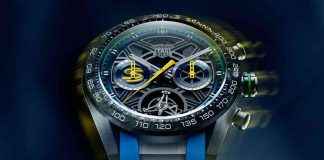Huawei, a leading technology company, recently introduced its innovative TruSense System for smart wearable devices at the Innovative Wearable Technologies day in Dongguan, Guangdong Province. This new system enhances the capabilities of smartwatches and fitness trackers to monitor and analyze physiological and environmental data, setting Huawei apart from competitors in the wearable market.
President of Huawei’s Consumer Business Group for smart wearables and health products, Zhang Wei, announced at the event that devices equipped with TruSense will be available for purchase starting in September. This move signifies Huawei’s commitment to staying ahead in the competitive wearable technology sector, challenging giants like Apple and Xiaomi with enhanced features and functionalities.
### The TruSense System: Revolutionizing Health Monitoring Technology
The Huawei TruSense System, known as 玄玑 (Xuan Ji) in Chinese, is a multi-dimensional sensing system that integrates single-point monitoring technologies to offer a comprehensive health monitoring experience. This system is the cornerstone of Huawei’s health monitoring technology, akin to the importance of System-on-Chip in smartphones and image sensors in cameras. It provides users with a more accurate, faster, flexible, open, iterable, and all-rounded health monitoring experience.
One of the key features of the TruSense System is its ability to assess a user’s emotional state and stress levels by analyzing heart rate data and utilizing an autonomic nervous sequence decomposition algorithm. Huawei’s sustained investment in optics, electronics, and materials research has expanded the system’s detection range to cover over 60 health indicators, making it a valuable tool for health-conscious consumers.
### Huawei’s Commitment to Health and Wellness
With over 11 years of experience in the smart wearable field and more than 150 million products shipped, Huawei has established itself as a trusted brand in the industry. The TruSense System represents a significant breakthrough in the company’s sports and health monitoring technology, aiming to help users adopt a positive and scientific lifestyle through innovative technology.
Huawei has collaborated with global professional institutions on over 250 health research projects, with participation from more than 14 million users. These projects cover a wide range of health topics, including risk assessments for endocrine blood sugar and ovarian health. By working with leading experts in the sports and health fields, Huawei is actively shaping the future of smart wearable devices in areas such as blood pressure management, chronic disease prevention, and standards for sports health monitoring.
### Industry Trends and Market Insights
According to the latest data from the IDC Worldwide Quarterly Wearable Device Tracker, global shipments of wearable devices saw an 8.8% year-on-year increase in the first quarter of 2024, reaching 113.1 million units. Among the top five brands in the market, Huawei holds a significant share alongside Apple, Xiaomi, Samsung, and boAt. This data reflects the growing demand for wearable technology and the fierce competition among key players in the industry.
As Huawei continues to innovate and introduce cutting-edge technologies like the TruSense System, the company is poised to capture a larger market share and attract more consumers looking for advanced health monitoring solutions. With a strong focus on research and development, Huawei is well-positioned to lead the way in the smart wearable sector and drive meaningful advancements in the field of wearable technology.
In conclusion, Huawei’s introduction of the TruSense System for smart wearables marks a significant milestone in the company’s journey towards offering advanced health monitoring solutions to consumers. By leveraging state-of-the-art technology and collaborating with experts in the health and wellness fields, Huawei is setting new standards for smart wearable devices and solidifying its position as a key player in the wearable technology market.

















